Mutinus ravenelii
Scientific name: Mutinus ravenelii (Berkeley & M.A.
Curtis) E. Fischer.
Derivation of name: Mutinus was a Roman phallic
deity and
means "penis," ravenelii indicates the species
is likely (not certain) named in honor of
Henry William
Ravenel (1814-1887) a South Carolina mycologist and
botanist.
Synonyms: Corynites ravenelii Berkeley
Common name(s): Red stinkhorn.
Phylum: Basidiomycota
Order: Phallales
Family: Phallaceae
Occurrence on wood substrate: Saprobic; solitary
to grouped
in wooded areas, on wood chips and decaying
wood in gardens, parks, lawns,
and other cultivated areas;
July through September.
Dimensions: Fruitbody 7-15 cm tall and 0.5-2.5 cm thick.
Description: Fruit body at first a white egg-like
stage
resembling a puffball. The outer wall (peridium) of the
"egg" splits and a hollow,
spongy, stalk extends outward.
The conspicuously pitted
stalk may be whitish below and
pinkish-rose above or uniformly colored.
An
abruptly
marked-off, slightly swollen zone 3-5 cm long at the
tapered
tip is
covered by a slimy, olive-brown smelly mass
of spores. The stalk
under the spore mass is dark pink
or rosy-red.
Edibility: Unknown.
Comments:
Flies are attracted to the fetid slimy mass and
serve to disperse the spores. This species and two closely
related species - M. caninus and M. elegans may be
difficult to cleanly separate from
each other. Consult
the website below for additional
comments on these
three species.
More information at MushroomExpert.com.
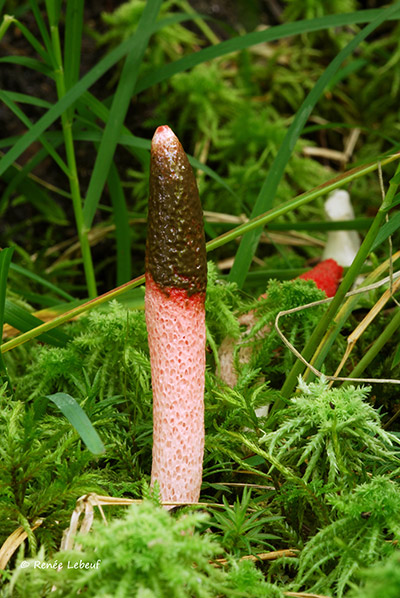
Figure 1. Mutinus ravenelii with a pinkish, conspicuously
pitted stalk
and a more intensely pigmented zone under the
spore mass.
Photo © Renée Lebeuf.
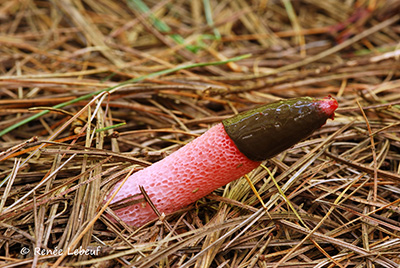
Figure 2.
Mutinus ravenelii features an abruptly
marked-off,
slightly swollen zone 3-5 cm long at the
tapered
tip covered
by a slimy, olive-brown smelly mass of spores.
Photo © Renée Lebeuf.
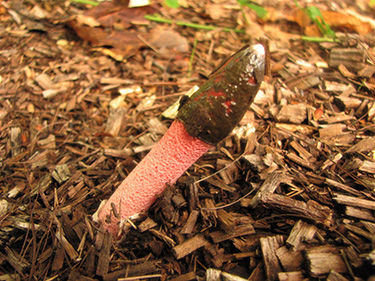
Figure
3. Wood chips are a favorite substrate for Mutinus
ravenelii.
Photo © Rick Van de Poll.
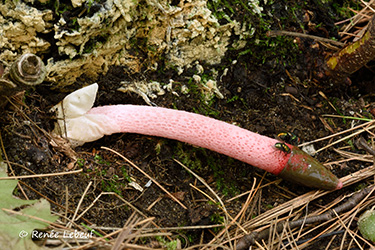
Figure
4. The remnants of the torn peridium are visible at
the left and a fly
is feeding on the spores at the right.
Photo © Renée Lebeuf.
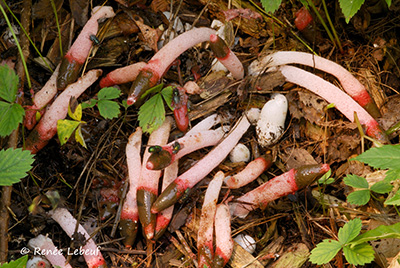
Figure
5. Fruit bodies of Mutinus ravenelii often occur in
clusters.
Photo © Renée Lebeuf
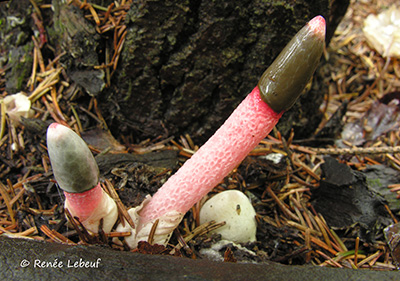
Figure 6. Mutinus ravenelii in "egg" stage, elongating, and
mature fruit body.
Photo © Renée Lebeuf.